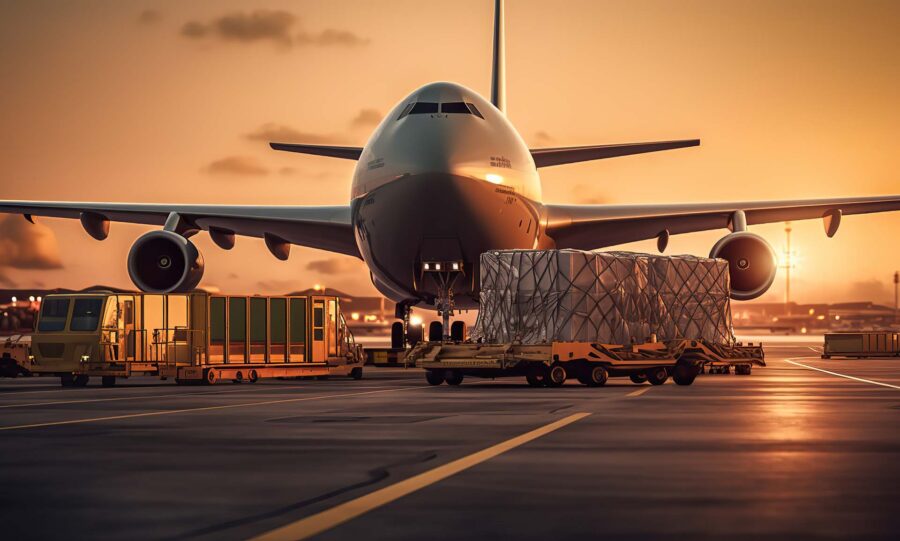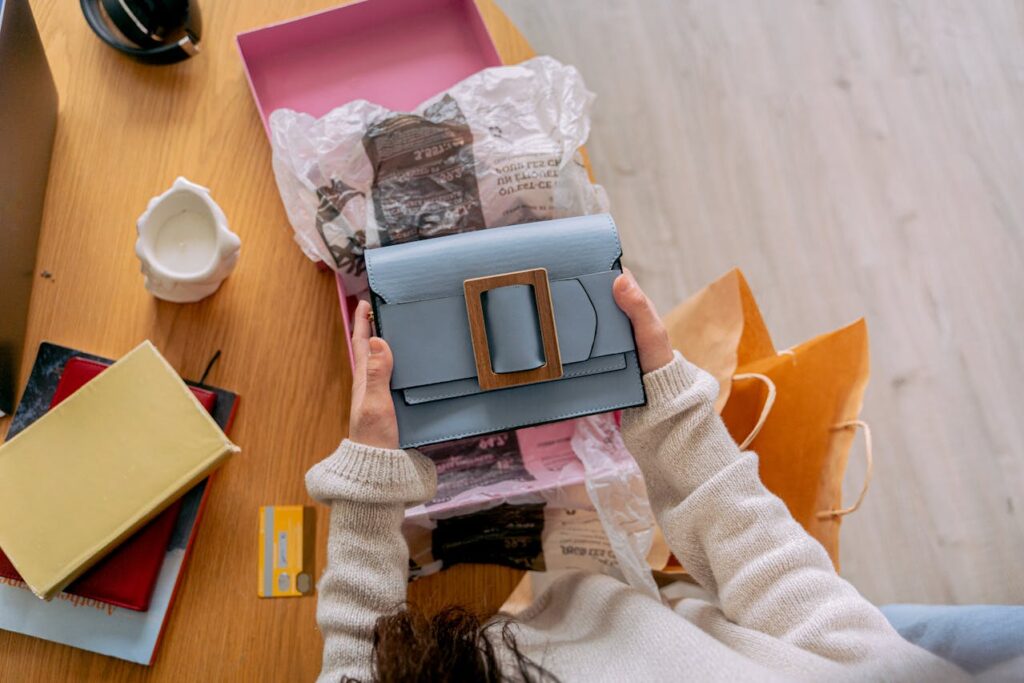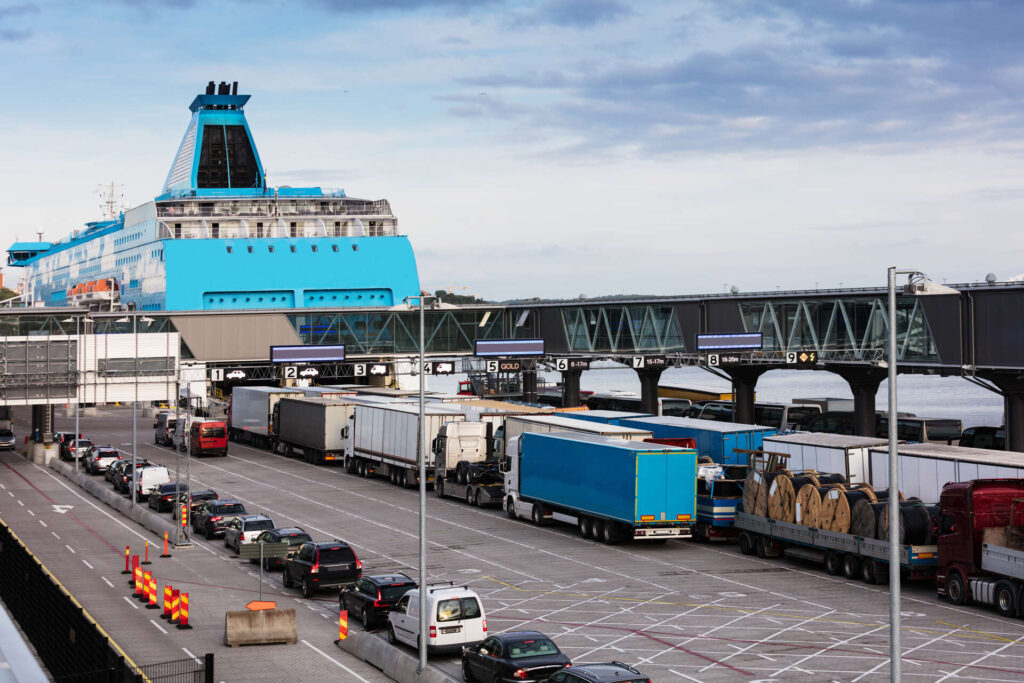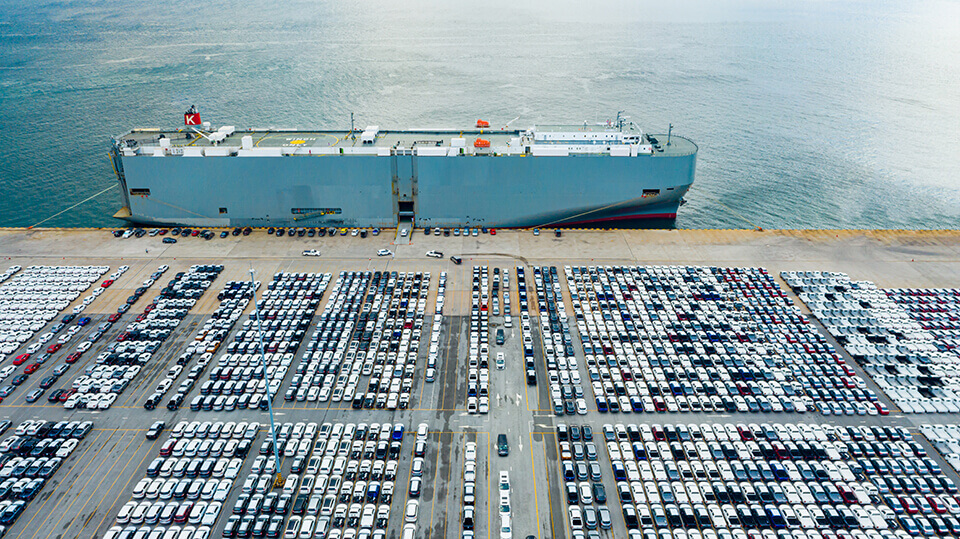Those of you who haven’t packed before probably have a hunch that it isn’t that easy and those of you who already relocated know it for a fact. The biggest concern when moving internationally is how to pack fragile items, and we admit it’s probably what brings the most headaches.
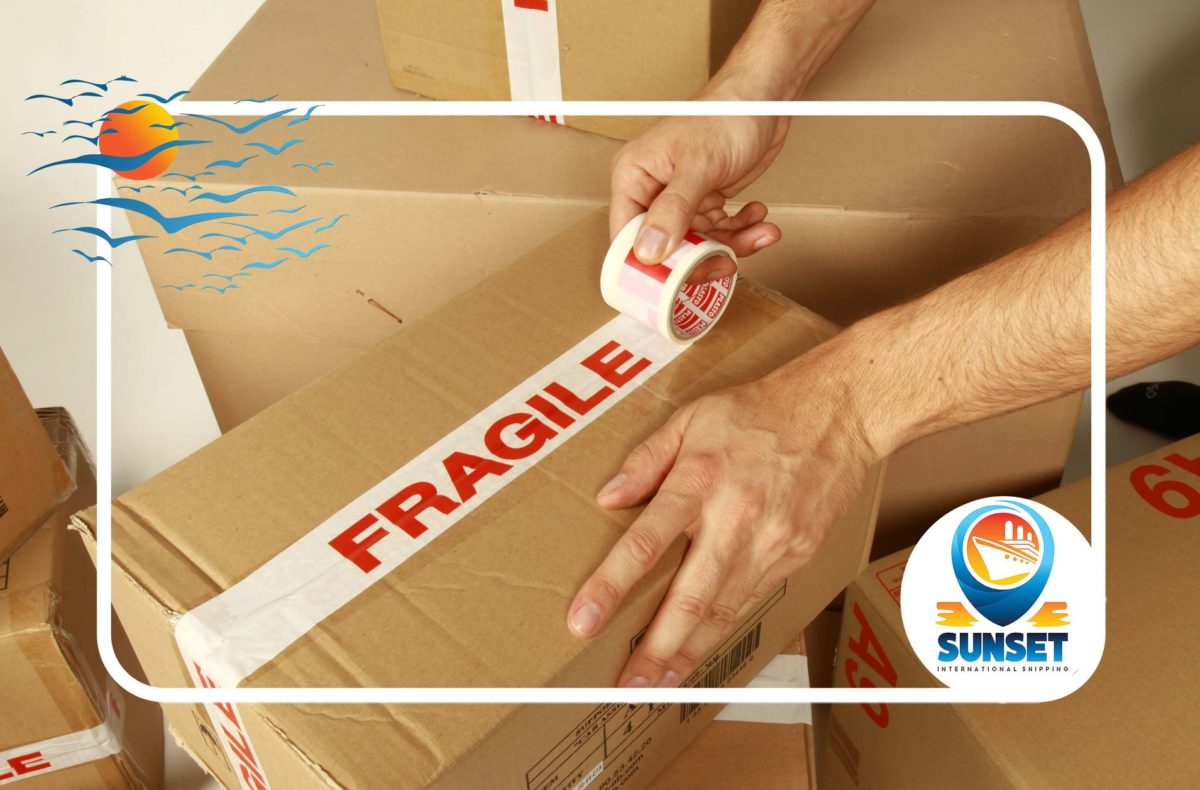

Although glass is a 100% recyclable material, throwing away your favorite delicate belongings after you move and unpack should be out of the question. So let’s take a look at how to package fragile items for shipping and avoid unnecessary stress because no one wants to see their favorite mirror broken to pieces, or the large TV screen demolished.
Preparatory Steps for Moving Fragile Items
For anyone who plans on moving abroad, it may be interesting to know that there are over 66 million expatriates all over the world. While one of the top reasons for moving overseas is getting a job for Americans in Europe, one of the main concerns of anyone leaving their homeland is adjusting to a new country. But what people tend to forget is that, when you don’t pack properly, the language barrier won’t be the only thing that breaks.
There are many steps needed to make the relocation, especially an international one, go smoothly. From thinking about how to get a job in Europe as an American and gathering all the documents needed to travel abroad to planning and buying supplies, it’s an extraordinarily demanding process. Here’s a thorough list of every material and supply that you can’t package or move without:
- Sturdy cardboard boxes. They are the essential part of every relocation, and they work like magic, as you can sort and place most of your possessions into them. They can be stored and used again, recycled, or handed down to someone else for similar purposes. Stock up on enough of them and get different sizes.
- Packing tape. Although using plain duct tape may seem like a good idea, it’s really important to secure the cartons as well as possible so there won’t be any nasty surprises, like bottom flaps opening while the movers carry them. That’s why it’s best if you find a good, sturdy tape meant for this purpose and avoid a bit of the moving stress.
- Painters’ tape. Since breakables are not only dishes and glass, but also mirrors, framed photos, and electronics, some of these objects will require you to secure their surfaces. That’s where this item comes in handy.
- Bubble wrap. All-around usable and, some would say, the best packing material for fragile items, especially if you’re moving across the world. You can apply it to secure anything and everything and be certain your possessions will arrive undamaged. Bubbles are the answer if you’re wondering how do you wrap a fragile object and avoid damage. If you properly wrapped them, that is.
- Different cushioning materials. Supplies needed to secure every box, so there’s no shifting and breaking inside, range from packaging peanuts and foam corners for artwork and mirrors to plain old packaging paper. The right tools for the job. This includes a tape dispenser, scissors, and a marker.
On an additional note, it would be good if you can stock up on specialized cartons that can be used for irregularly shaped breakables. A lifesaver would be if you can get your hands on box dividers, which will come in handy for objects like glasses, cups, plates, and even perfume bottles.
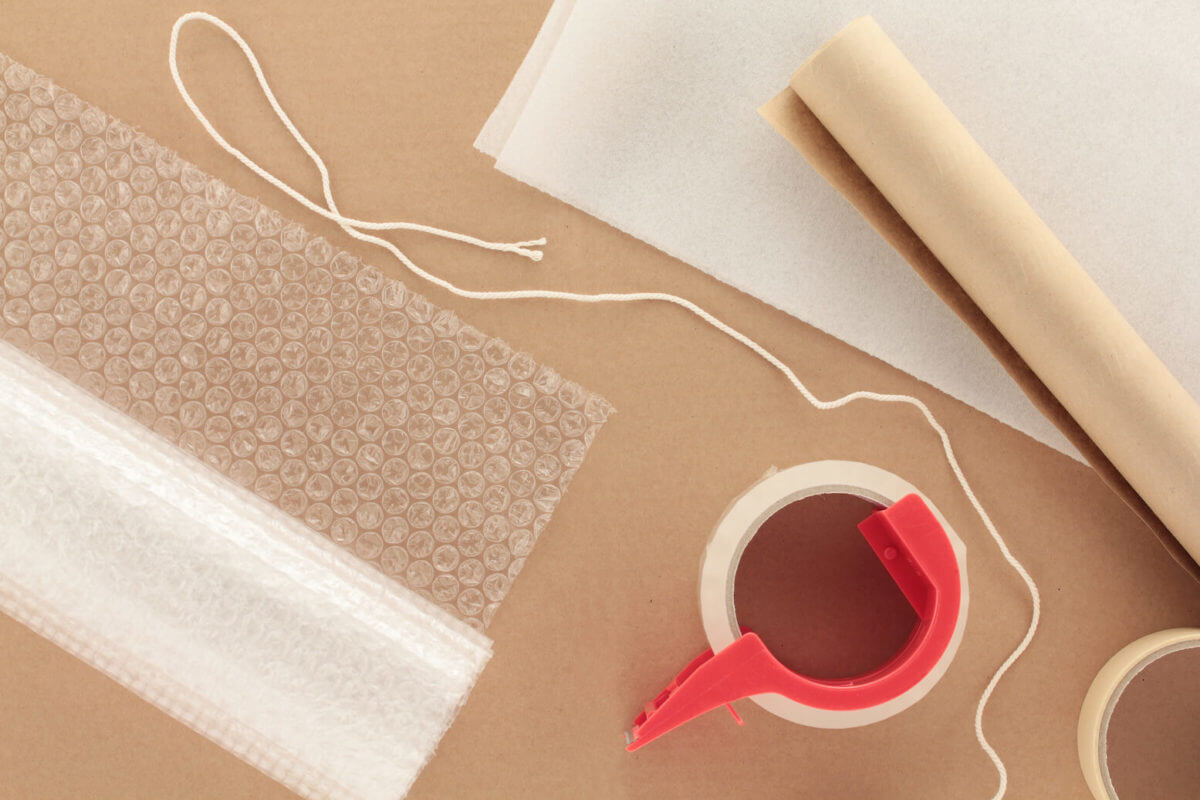

Can I Use Stuff Other Than a Cardboard Box for Packaging Fragile Items?
You can find things all around your home that can be used to place your household belongings into them, and even package delicate objects. Instead of a carton, you can take plastic bins that have lids, or even crates. A hard suitcase may be an option for things like books. Make sure they are not overloaded and too heavy to handle. But our advice for all of you relocating abroad with an international moving company is to get their packing services, especially if you’re not certain that the boxes and bins you were planning to use will hold in transport and secure all the breakables until they reach their destination.
Can I Find a Free Box, or a Few, for Packing Fragile Items for Moving?
Perhaps you can move on a budget if you have already found a job. If one of the relocation questions to ask the employer was whether you will get financed for your move, and the answer was yes, that’s one thing less to think about. If you have enough time, and you will if your preparation starts early, you can save up a bit more by acquiring free supplies. If you visit your local liquor store, a bookstore, and even a retail store, they will probably be happy to get rid of a box or two, and you’ll get your hands on at least some of the materials you need. Googling the best places to live abroad with family is not the only thing you can do online. If you want to get supplies without leaving your home, you can search for them on sites like Freecycle, where you can find used cartons that people are giving away for free.
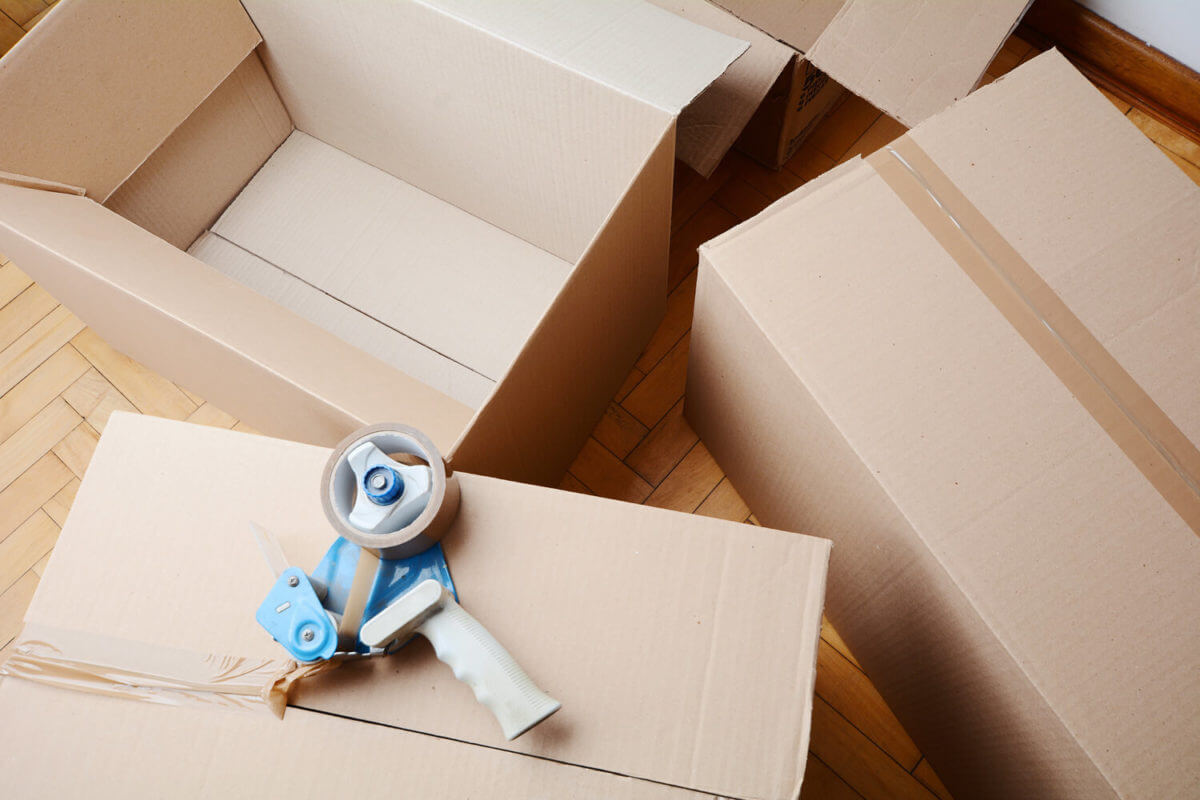

Let’s Get Down to Work With the Best Packing Material for Fragile Items
Your delicates are probably on the list of what to pack when relocating abroad, so you should know how to take care of them properly. While considering the tips for learning a new language, find a perfect spot for packaging with a large flat surface. It can be a big dining table or the floor in a room that won’t be used. Grab a blanket or any other material that you think will provide enough cushioning and gather all the supplies you need. You should get smaller and medium-sized boxes for this, so you can’t overload them. Grab the tape and secure each and every bottom. Be certain that you cushion the bottoms enough, and do it with all the boxes meant to carry your breakables.
How Do You Pack Fragile Glassware Before an International Moving Company Arrives?
Out of all the delicate objects in a home, glassware is probably the trickiest to package and easiest to break. Of course, when you move to another country, you can visit stores and replace any damaged delicates with new ones, but some things hold sentimental value, and some are too expensive to just let arrive broken. So, it’s better to learn how to wrap fragile items than to learn how to live in another country and eat and drink out of plastic dishes.
How do you package something that is fragile and tricky because of its shape, like wine glasses? The most important thing is that you wrap every object individually, and be certain that every inch is covered. Bubble wrap is the best solution, it will keep your glass safe, and you can cover irregular shapes like handles on cups. Place glasses vertically, but be sure the whole package is cushioned with paper and peanuts. Don’t overload the boxes, but also check that nothing is shifting when you close the carton. Box dividers can be life-saving when it comes to both plates and glasses because, with them, your delicates will be safe for transport. If these objects are not only easily breakable but also antiques, you can get some advice from a pro in the following video.
How Do You Pack Fragile Items Without Bubble Wrap for Moving Overseas?
Whether you’re relocating to another country for love or have better career options abroad and you’re relocating with kids, you probably already have too much on your mind. And that’s why the move-out day has drawn near, but you didn’t manage to get your hands on packing materials, especially bubble wrap. That’s where different types of paper will come in handy, from the packaging one to the old newspapers you have lying around your house. Just like with other protective sheets, use paper to cover each object individually and cover everything. Just remember to cushion each package thoroughly.
How Do You Wrap a Fragile Object Without Supplies? Use Household Softies to Protect Breakables
If you are short both on wrapping and cushioning materials, you can use different soft objects instead that can be found inside your home. Old shirts, towels from the bathroom and the kitchen, as well as sheets and even socks, can all be used to secure delicate objects for shipping. Use them just like you would any wrapping material, for both cushioning and covering every single object; you only have to be generous with it.
Now, you’re probably wondering where socks come in. They are a great solution for wrapping glasses and perfume bottles, however funny it may sound. After all, when you start working in Europe as an American, that will be one of the fun stories you get to tell your colleagues or in one of the expat communities.
How to Package Fragile Items for Shipping? Taking Care of Glass Surfaces
Artwork, mirrors, and framed photographs need a bit of a different approach. This is where both painters’ tape and foam corners come into play. Use the dispenser to make an X over the surface to lower the chances of the glass vibrating during shipment. The foam should be placed on the corner of each piece, before you place them into specialized cartons, to avoid shifting. Keep in mind that one of the smartest tips is to avoid packing too many objects together, and also make sure they are placed vertically.
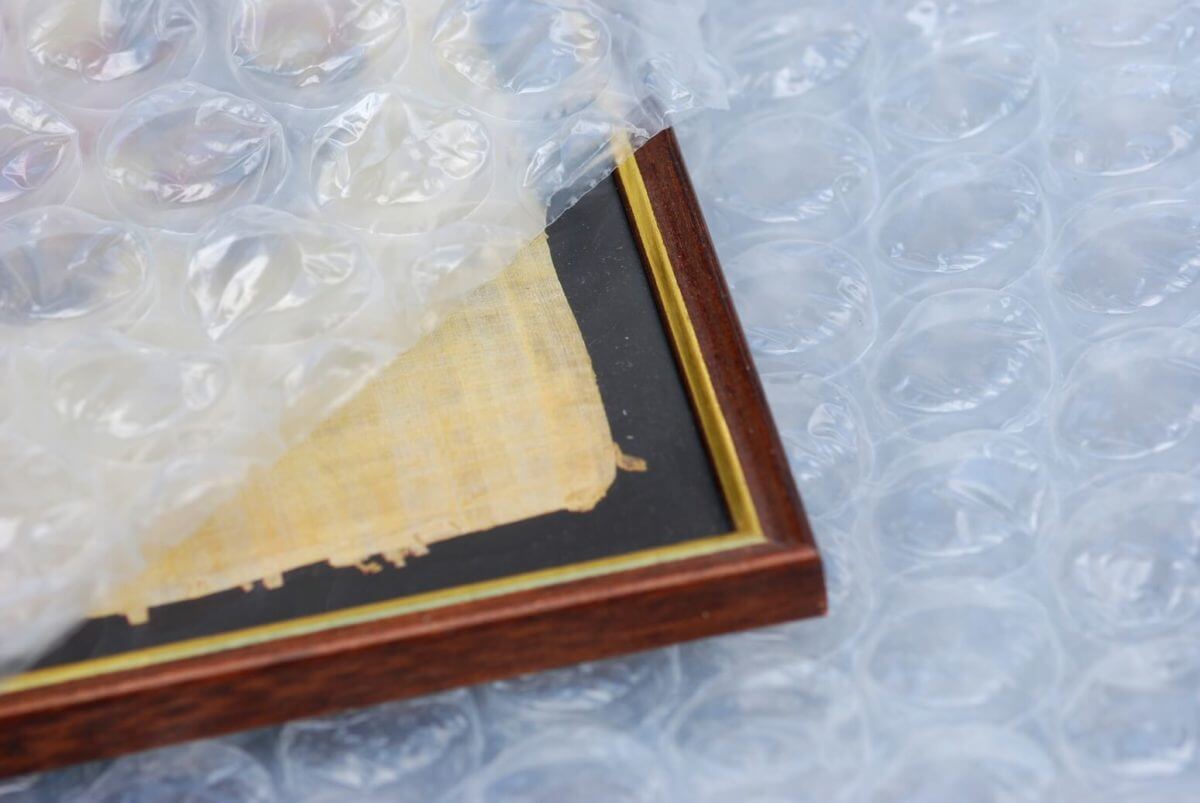

How to Secure Electronics for Shipping Overseas
All the electronics you own that won’t fit into your bag or pocket will also have to be properly prepared. After all, your laptop, your tablet, and similar gadgets are a way to keep in touch with friends, and that’s just one of the reasons why you should take proper precautions when packing them. The best solution is to place them into their original packaging and seal them. Also, when using a service such as a vehicle shipping overseas, check if you have left anything like a GPS unit inside, and take it out. Shipping a car overseas requires you to check thoroughly if you have any personal belongings left before you hand your car to an overseas moving company.


Now That You Know How to Wrap Fragile Items, Proper Labeling Is Crucial
Labeling every package is important, no matter if your move is local or you are transporting them with an overseas shipping company. If you are already following some good packing tips, you realize that proper labeling will make your life easier when it comes to unpacking. But in the case of delicate objects, it is an essential step. If you label every box containing breakables, the professional movers will know to take special care of them.
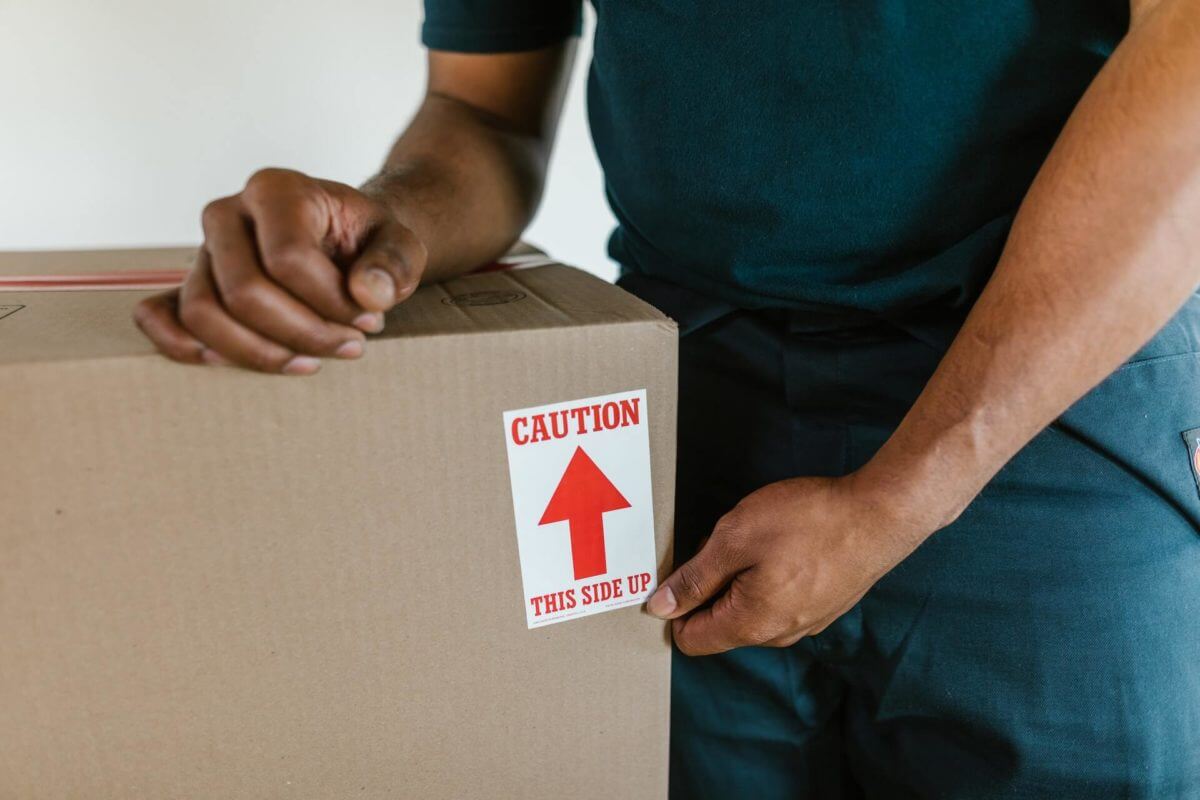

How to Pack Fragile Items for Storage When You’re Moving Internationally
Wherever you are relocating in the world, to one of the friendliest countries or one with a good healthcare system, you might require a storage service to store away your belongings for a while. Preparing them properly to be stored will require you to follow every preparatory step with patience, but above all, make sure that everything you store is clean and dry.
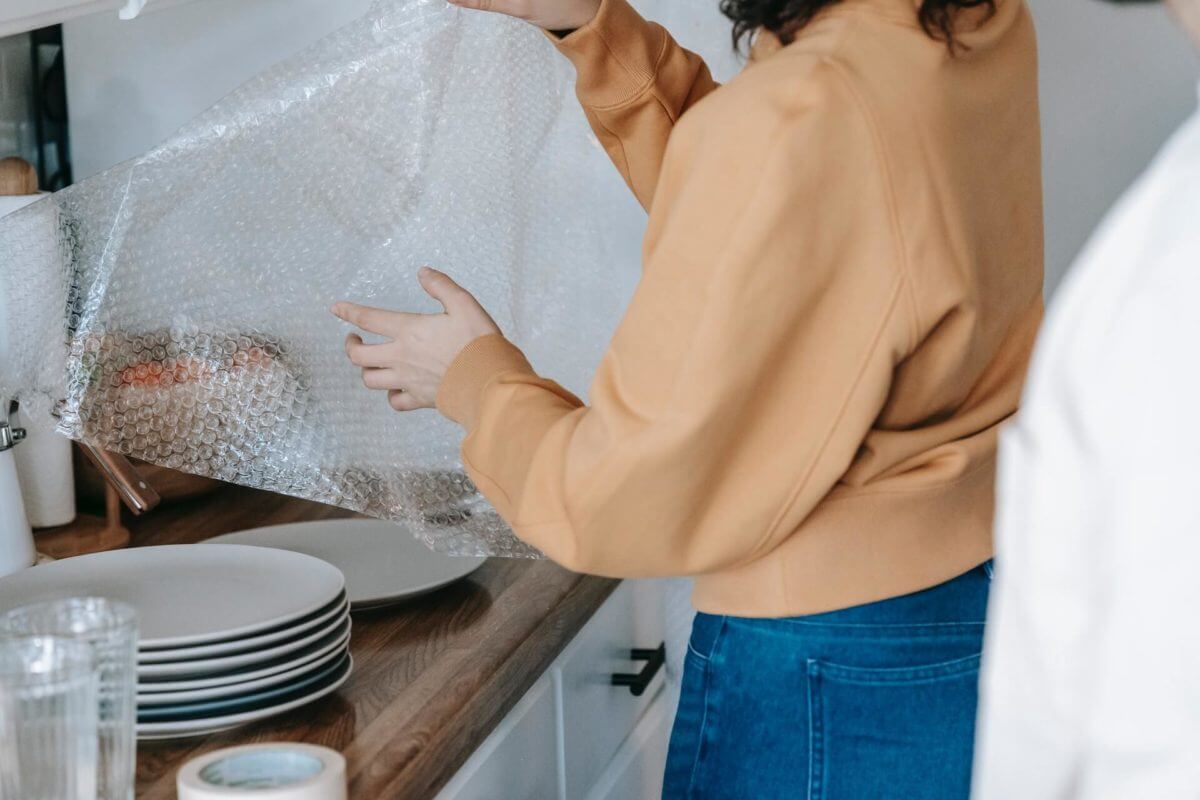

Call an Overseas Shipping Company to Give You a Hand
We must admit that taking proper steps to secure all breakable objects that you own is no easy task. When you plan to move abroad, you already have too much on your plate, and this task might prove to be the thing that you dread the most, even with all the tips that we’ve provided to help you. The smartest thing you can do in this situation is to call on professional movers to do all the packaging for you and help you have a stressless and swift move. After all, they are vetted and trained in handling such objects, and they will bring all the necessary supplies and materials to be certain everything arrives undamaged.
FAQ
When packing fragile items, you will need several materials to ensure that they are adequately protected during transportation. Bubble wrap is a must-have item as it provides a cushioning layer around the items. You will also need packing tape to secure the bubble wrap in place. If the item is small, you can use packing peanuts or crumpled paper to fill any gaps in the box and prevent movement. For larger items, use foam padding to wrap around the edges and corners to prevent impact damage. Lastly, use sturdy boxes that can support the weight of the item and provide an additional layer of protection. It’s better to err on the side of caution when packing fragile items to prevent any damage during transit.
Choosing the right size box for packing fragile items is crucial to ensure that they are protected during transportation. It’s important to choose a box that is slightly larger than the item to allow for adequate cushioning material. A general rule of thumb is to leave at least two inches of space between the item and the box walls on all sides. This space can be filled with bubble wrap, foam padding, or packing peanuts to prevent any movement during transit. However, be careful not to choose a box that is too large as it can lead to the item shifting and getting damaged during transportation.
One common mistake is not using enough cushioning material, such as bubble wrap or foam padding, leaving the item susceptible to impact damage. Another mistake is overpacking the box, which can lead to the item shifting and getting damaged during transit. Using a box that is too small, not labeling the box as fragile, and not securing the box with enough packing tape are also common mistakes that people make when packing fragile items.
To achieve maximum protection, start by wrapping the item with several layers of bubble wrap or foam padding, paying particular attention to the edges and corners. Secure the wrap in place with packing tape, making sure it’s tight but not too tight to avoid damaging the item. If the item has any openings or cavities, fill them with crumpled paper or packing peanuts to prevent movement during transportation. For items with multiple pieces, wrap each piece separately before placing them in the box. Finally, label the box as fragile and use sturdy boxes that can support the weight of the item and provide an additional layer of protection.
Start by wrapping each item with several layers of bubble wrap, paying particular attention to the rim and base. Secure the wrap in place with packing tape, making sure it’s tight but not too tight to avoid damaging the item. Next, place each item in a separate compartment of a sturdy box, with crumpled paper or packing peanuts in between to prevent them from touching each other. It’s essential to fill any gaps in the box to prevent movement during transportation. Label the box as fragile and use a sturdy box that can support the weight of the items and provide an additional layer of protection.
Labeling fragile items during a move is essential to ensure that they are handled with care and avoid any damage. Start by selecting bright-colored labels that stand out from the other labels, such as red or orange. Place the label in a visible area of the box, and write “FRAGILE” in large, bold letters. You can also include a directional arrow pointing upwards to indicate that the box should be handled with care and kept upright during transportation. For items that require a special way of handling, such as delicate glassware or electronics, you can include additional labels specifying the handling instructions.
Packing artwork and other fragile decorative items requires extra care and attention to ensure that they arrive at their destination safely. Start by wrapping the item with several layers of bubble wrap or foam padding, paying particular attention to the corners and edges. Secure the wrap in place with packing tape, making sure it’s tight but not too tight to avoid damaging the item. If the item is framed, place cardboard on both sides and secure it with tape. Next, place the item in a specialized art box, which is designed to provide additional protection. Fill any gaps in the box with packing peanuts or crumpled paper to prevent movement during overseas shipping. Label the box as fragile and indicate which side is up to ensure that the item is handled with care.
Start by backing up any important data and removing any batteries or detachable parts from the item. Wrap the item with several layers of bubble wrap or foam padding, paying particular attention to the corners and edges. Secure the wrap in place with packing tape, making sure it’s tight but not too tight to avoid damaging the item. Next, place the item in a specialized electronics box, which is designed to provide additional protection. Fill any gaps in the box with packing peanuts or crumpled paper to prevent movement during transportation. Label the box as fragile and indicate which side is up to ensure that the item is handled with care. For larger electronics, such as televisions or computer monitors, consider using a wooden crate for added protection.
Filling gaps in boxes is crucial to prevent fragile items from moving during transit and getting damaged. There are several materials you can use to fill these gaps, such as packing peanuts, crumpled paper, or foam padding. Packing peanuts are small, lightweight, and can fill small spaces effectively. Crumpled paper is eco-friendly and can be used for larger items or to fill spaces around the edges. Foam padding is an excellent option for irregularly shaped items or to provide extra cushioning around delicate items. It’s important to ensure that the gap is filled entirely, but not too tightly, to avoid damage to the item.
Protecting delicate furniture during a move requires extra care and attention to ensure that they arrive at its destination safely. Start by disassembling any removable parts, such as legs or cushions, and wrapping them in bubble wrap or foam padding. Protect the edges and corners of the furniture with foam padding or cardboard, securing them in place with packing tape. Use furniture blankets or moving pads to cover the entire piece of furniture, securing them in place with tape or stretch wrap. For fragile items such as glass table tops, use specialty crates or boxes that are designed to provide extra protection. Label the furniture as fragile and indicate which side is up to ensure that it is handled with care during transportation.
Protecting fragile items during loading and unloading requires extra care to ensure that they are not damaged in the process. First, ensure that the overseas shipping company team is aware of which boxes or items are fragile and provide clear instructions on how to handle them. Labeling boxes as fragile and indicating which side is up can also help ensure that they are handled with care. If possible, supervise the loading and unloading process to ensure that fragile items are handled correctly. Use furniture blankets or moving pads to protect delicate furniture during the loading and unloading process. If possible, load fragile items last, and unload them first to avoid any damage from other items shifting during transit.
Bubble wrap is one of the best materials for cushioning fragile items and providing protection against impact damage. Foam padding is also an excellent option for protecting the edges and corners of delicate items. Packing peanuts and crumpled paper are great for filling gaps in boxes and preventing movement during transit. Furniture blankets and moving pads are perfect for protecting large and delicate items such as furniture or artwork. Specialty crates and boxes are also available for specific fragile items such as electronics or glassware.
Reducing the risk of breakage during the moving process requires taking extra precautions to ensure that your belongings are adequately protected. Start by selecting sturdy boxes that can support the weight of the items and provide an additional layer of protection. Use packing materials such as bubble wrap, foam padding, or packing peanuts to cushion and protect fragile items during transportation. Label boxes as fragile and indicate which side is up to ensure that they are handled with care. If possible, supervise the loading and unloading process to ensure that fragile items are handled correctly. Consider purchasing moving insurance to provide additional protection for your belongings.
Packing specific types of fragile items requires extra care and attention to ensure that they arrive at their destination safely. For mirrors, start by wrapping them in bubble wrap or foam padding, paying particular attention to the corners and edges. Place the mirror in a specialized mirror box, which is designed to provide additional protection. Fill any gaps in the box with packing peanuts or crumpled paper to prevent movement during transportation. Label the box as fragile and indicate which side is up.
For antiques, wrap the item in acid-free tissue paper to prevent damage from acid or moisture. Place the item in a specialized antique box, which is designed to provide additional protection. Fill any gaps in the box with packing peanuts or crumpled paper to prevent movement during transportation. Label the box as fragile and indicate which side is up.
Packing fragile items for storage requires extra care and attention to ensure that they are adequately protected during the storage period. Start by wrapping the item with several layers of bubble wrap or foam padding, paying particular attention to the edges and corners. Secure the wrap in place with packing tape, making sure it’s tight but not too tight to avoid damaging the item. Next, place the item in a sturdy box that is slightly larger than the item to allow for adequate cushioning material. Fill any gaps in the box with packing peanuts or crumpled paper to prevent movement during storage. Label the box as fragile and indicate which side is up. Store the box in a cool, dry, and dark place to prevent any damage from moisture or sunlight.


